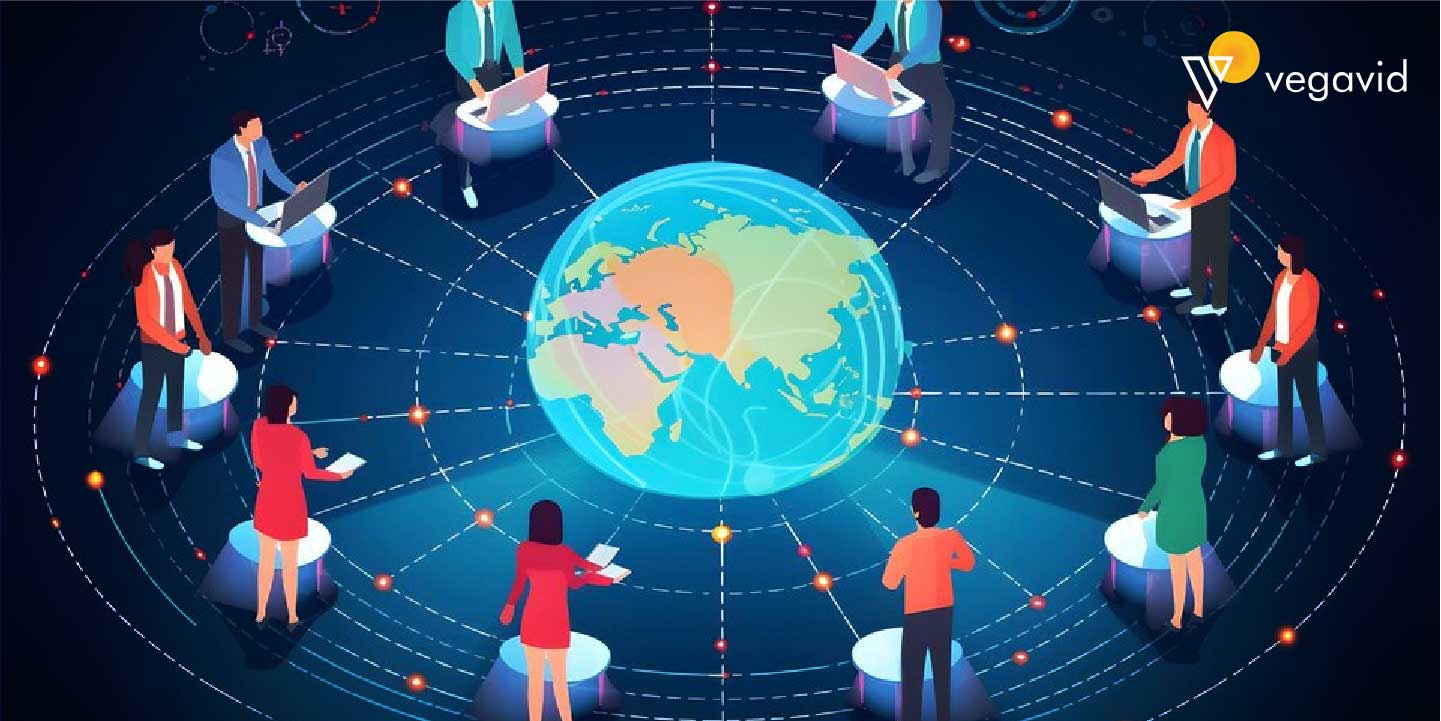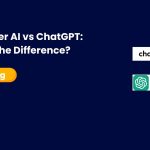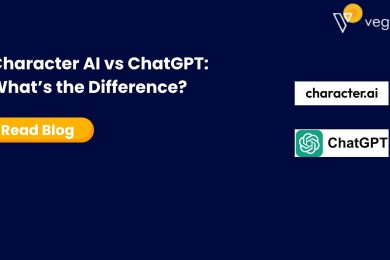
Web3 refers to the next phase of the internet, where decentralized technologies like blockchain and cryptocurrencies allow for an open financial system without centralized control. Critical aspects of web3 include decentralization, transparency, and community ownership. As significant advancements are made in this emerging space, identifying notable projects that aim to shape the future of web3 is essential. This article examines promising initiatives across sectors like defi, NFTs, DAOs, and infrastructure worth monitoring in the new year.
Definition And Significance Of Web3
Web3 marks a shift from today’s internet era dominated by large tech corporations towards a more open, community-governed internet. In web3, applications are built on decentralized blockchains instead of centralized platforms. Users own their data and digital assets, and communities come together to govern protocols and fund projects through token-based economic models.
By disintermediating centralized entities, web3 provides greater access, security, and transparency. As billions continue joining the digital economy, web3’s promise of financial inclusion and self-sovereignty holds tremendous long-term significance.
Importance Of Identifying Key Projects
Within the fast-evolving web3 landscape, backing the right initiatives could yield lucrative returns for early investors and help steer technologies toward positive outcomes. However, the space remains highly speculative, with numerous projects of varying quality.
Identifying consequential projects receiving backing from severe developers and investors is a sensible starting point for onlookers seeking exposure. This article outlines some notable web3 initiatives, analyzes their progress, and aims to inform readers about meaningful trends in infrastructure, finance, and decentralized applications.
Decentralized finance, or defi, opens a new paradigm of financial services without centralized intermediaries. Defi enables trustless lending, borrowing, trading, and other transactions using smart contracts on blockchains. The total value locked in defi surpassed $100 billion in 2022, showcasing rising popularity and potential to transform traditional systems. However, some note drawbacks like security challenges and a lack of regulation. In the future, how defi matures amid evolving policies and adoption curves warrants attention.
Notable Defi Projects
1. Aave
This Lending Marketplace Is Among The Largest In Defi, Facilitating Access To Crypto Loans And Stablecoin Yield. In 2023, Aave Will Focus On Expanding Access Through Partnerships And Integrating Traditional Finance Tools Better. Aave is a decentralized finance protocol that allows users to earn interest on deposits and borrow digital assets using overcollateralized flash loans.
As one of the largest defi lending markets, Aave currently has over $7 billion in total value locked in its protocol. It supports over 30 digital assets and utilizes a liquidity mining model where deposits earn their native AAVE token as an incentive. Looking ahead, Aave aims to integrate more traditional financial tools, provide services to institutional players, and expand its ecosystem through partnerships. Its proven track record of supporting significant volumes makes it a defi lending market core pillar.
2. Makerdao
As The Initial Project To Power A Decentralized Stablecoin, DAI, Makerdao Continues Dominating The Stablecoin Supply. Its On-Chain Collateralized Debt Positions Drive Defi’s Extensive Use. Makerdao established itself as the foundational project powering the DAI stablecoin, one of the first decentralized currency pegs. It utilizes a collateral-backed model where assets like ETH are locked in smart contracts via Collateralized Debt Positions to mint stable DAI tokens.
With over $10 billion in total value once closed, makerdao’s stablecoin is one of the most utilized cryptocurrencies for settlements and payments across defi protocols. As decentralized stablecoins grow in importance, makerdao’s leading market position and ongoing development of its multi-collateral DAI make it an impactful network to observe.
3. Yearn Finance
This Experimental Project Provides Automated Strategies For Yield Generation Via Vaults. Plans Involve Leveraging Partnerships To Broaden Services Globally. Makerdao established itself as the foundational project powering the DAI stablecoin, one of the first decentralized currency pegs. It utilizes a collateral-backed model where assets like ETH are locked in smart contracts via Collateralized Debt Positions to mint stable DAI tokens.
With over $10 billion in total value once closed, makerdao’s stablecoin is one of the most utilized cryptocurrencies for settlements and payments across defi protocols. As decentralized stablecoins grow in importance, makerdao’s leading market position and ongoing development of its multi-collateral DAI make it an impactful network to observe.
4. Opensea
As The Largest NFT Marketplace, Opensea Simplifies Creating And Trading Digital Assets. Its Developer Tools Also Empower Thriving Creative Economies Within Many Games And Virtual Worlds. As the largest NFT marketplace, opensea has played a pivotal role in the crypto collectibles and digital items boom. It hosts millions of listings across various categories like art, domain names and decentralized apps.
Opensea simplifies creating, buying, and selling NFTs, bringing blockchain-based digital ownership to a broader audience. The platform also offers tools for developers to integrate NFT functionality into games, marketplaces, and other decentralized applications. With its established user base and inclusive focus, opensea remains crucial for incubating creativity as NFT use cases expand in the years ahead.
5. Flow
Launched By Dapper Labs, Flow Facilitates Use Cases Beyond Art Through Its Ethereum-Compatible Blockchain. Upcoming Initiatives Like NBA Top Shot Could Extend NFT Ubiquity. Dapper Labs created flow, the developer behind cryptokitties, to facilitate NFT use cases beyond just digital art. It utilizes an Ethereum-compatible blockchain designed for consumer applications where users can trade digital assets without prohibitive costs or delays.
Flow aims to power branded experiences like NBA Top Shot, a popular fantasy basketball game featuring NFT player cards. It processes thousands of transactions per second cheaply, making it well-suited for interactive apps and games. Flow also captures value flows to creators through established marketplaces and wallets.
Flow’s blockchain could realize broader adoption as Dapper continues releasing innovative titles and exploring new NFT integration opportunities with media firms. By addressing current limitations and focusing on utility, Flow stands out as a core network supporting new consumer-centric NFT use cases.
6. NFT Worlds
By Aiming To Underpin An Entire Metaverse Economy Anchored In NFT Land Ownership, Worlds Envisions New Forms Of Persistent Virtual Worlds Governed Without Centralized Control. NFT Worlds provides a compelling vision of minting entire virtual worlds as NFTs governed by DAOs.
Through its proof-of-place consensus mechanism, users can purchase land parcels represented by NFTs and collaborate with others to build out customizable environments. The project explores new economic incentives where land ownership is a portal to shaping communal metaverses.
Such persistent online worlds unlocking creator opportunities through decentralized governance captivates many in the industry. Recent funding rounds and progress on initial world development make NFT Worlds one to observe closely.
Potential Impact On Traditional Finance
If defi manages to remedy existing shortcomings while sustaining growth, its impact could be profound. Competitive loan and savings rates could shift allocative dynamics. Innovative contract executions increase automation, transparency, and efficiency, implying productivity gains. Interfaces integrating defi seamlessly into traditional finance infrastructure may help realize mainstream applicability. Extensive funding for such promising projects makes following their progress essential.
NFTs enable unique digital items to be tracked and verified on blockchains. Beyond proving ownership and authenticity, NFTs can allow new forms of fan engagement and digital economies online through interoperable use cases across gaming, social media, and decentralized networks. Total NFT sales topped over $25 billion in 2021, with digital art dominant.
However, 2022 saw a marked downturn likely stemming from high volatility and macro headwinds. While recent numbers remain inflated compared to the pre-bull market, specific projections indicate stable long-term growth. As NFT applications in gaming, metaverses, and community ownership emerge, evaluating pioneering projects in such areas proves worthwhile.
NFTs Beyond Digital Art
Merging advanced AR/VR technologies could see NFTs represent immersive “wearable assets” within communal metaverses and simulations. As gaming studios incorporate tradeable in-game items, actual digital ownership expands entertainment horizons substantially. Projects forging ahead to tokenize ip rights, documents, and unique experiences through NFTs may unleash tremendous economic opportunities if designed with sustainability and accessibility.
Decentralized autonomous organizations (DAOs) facilitate governance, coordination, and funding of initiatives through online communities without traditional hierarchical structures. Powered by cryptographic tokens and smart contracts on platforms like ethereum and tezos, DAOs enable transparent, programmable self-governance through on-chain processes.
Noteworthy DAO Projects
1. Constitution DAO
This Experimental Initiative Raised $40 Million To Purchase A Rare Copy Of The US Constitution But Ultimately Failed To Win The Auction. However, It Proved Community Fundraising Models Through DAOs Are Viable. Formed to collectively bid on a rare copy of the US Constitution at auction, Constitution DAO demonstrated the viability of fundraising models enabled by DAOs.
While ultimately failing to acquire the document, it brought attention to this organizational structure by attracting thousands of contributors and accruing over $40 million in a matter of days. The experiment highlighted both opportunities and limitations of decentralized governance applied at such a large scale.
2. Metacartel
As An Investment DAO, Metacartel Coordinates Venture Funding And Grants Into Promising Web3 Startups, Benefitting From Collective Wisdom. As an investment DAO, metacartel facilitates the coordination of venture funding for promising Web3 startups evaluated through its community voting processes.
It governs a portfolio of grants and cryptocurrency resources to support initiatives aligned with an open metaverse and decentralized technologies. By benefitting from the pooled insights of its members, metacartel exemplifies the collaborative wisdom of crowds approaches in crypto networks.
Amdao
Aims To Act As The Swiss Army Knife Of The Anthropic, Helping Coordinate Resources For Beneficial AI Development Under A Decentralized Constitution. Launching under AI safety startup Anthropic’s auspices, amdao intends to utilize decentralized mechanisms for allocating resources to critical AI initiatives. It establishes a framework for beneficially aligning advanced technologies via grants and protocols instead of relying solely on authority-based structures. Amdao’s ambition to apply DAO structures to advancing general welfare makes it an initiative with implications beyond the crypto sphere.
Key Projects Facilitating Cross-Chain Transactions
As separate blockchain networks emerge with specialized use cases, the need for interoperability, allowing seamless value and data transfers, becomes more crucial. Bridging isolated networks ensures web3 delivers its promise of an open and universally accessible internet.
- Cosmos: Provides Foundational Inter-Blockchain Communication Protocols Enabling Decentralized Value Transfers Between Separate Blockchains Through Its IBC Standard. As a foundational protocol, Cosmos facilitates interoperability between independent blockchains using sovereign zones secured by tendermint consensus. Its Inter-Blockchain Communication standard enables low-cost value transfers across disparate networks. Numerous defi platforms leverage Cosmos’ hub-and-zome architecture to combine individual security with shared liquidity pools. Continued development aims to simplify cross-chain activity between diverse ledgers further.
- Polkadot: Similar To Cosmos, Polkadot Interconnects Independent Blockchains Through A Shared Security Model. Various Defi And Data Platforms Are Being Built On Top. Similar to Cosmos, Polkadot allows separate blockchains called parachains to communicate and transfer value securely under a shared security process via its relay chain. Various Dapps are being built on its heterogeneous multi-chain infrastructure using designs like bridges and atomic swaps. Polkadot’s shared security model may someday provide greater interoperability across distinct ledgers at Web3’s base layer.
- Ethereum Name Service: Speeds Web3 Integration By Associating User-Friendly Names With Cryptographic Wallet Addresses Across Ethereum And Alternative Networks Through A Single Registry. By mapping human-readable names to wallet addresses, ENS streamlines navigation between decentralized applications regardless of blockchain. It lets users send funds or interact seamlessly between Ethereum and chains, integrating ENS resolution. ENS adoption expands the accessibility of Web3 applications while further enabling seamless cross-network interoperability at the user-interface level.
Advancements In Blockchain Connectivity
Developments like sidechains, bridges, layer two scaling solutions, and multi-network transaction formats gradually dissolve barriers between disparate blockchain ecosystems. As technologies mature to support scalable, low-cost interoperability, the overall cohesion and usability of web3 infrastructure improve substantially. Monitoring the progress of impactful interoperability initiatives remains prudent.
Robust, sustainable base infrastructure underpins the success of all web3 applications and economies. Projects advancing scalability, efficiency, and accessibility attract scrutiny. L2 networks like polygon and optimism help boost throughput and lower fees on ethereum, addressing concerns around costs and slow transaction speeds hindering widespread adoption. Meanwhile, protocols powering alternative blockchains like solana, avalanche, and elrond tout fast, low-fee transactions. Other eco-friendly networks aim to curb energy usage through innovative designs, essential issues as infrastructure scales.
Factors To Consider When Investing In Web3 Projects
Evaluate the quality of developers and community backing, including funding secured from credible investors. Consider the project vision, its potential impact, user base, and the solution provided relative to the competition. Review product progress and activity levels on social platforms. Check basics like website quality, whitepaper details, and ongoing communication standards. Examine tokenomics models, economic sustainability, and risk management plans.
Critique stated plans versus actual achievements to gauge execution capability. Note the frequency and scope of updates regarding the development roadmap, any unforeseen hurdles encountered, and solutions adopted. Check presence and engagement levels across multiple social forums, indicating cohesive communities rallying behind initiatives.
Furthermore, finding discussions around a project’s legal and regulatory framework provides insights into long-term structure and ambition. Focusing on feasible visions under sound leadership backed by active development delivers the safest bets.
Conclusion
As tremendous value continues pouring into promising areas enhancing web3’s scope and usability, like improved interoperability, scalable infrastructure, and innovative decentralized applications, following high-potential initiatives provides a window into emerging trends. While speculation abounds, identifying top projects distinguished by fundamental strengths, credible execution, and propensity to shape their sector positively offers a sensible starting point for meaningful participation. With web3’s transformative potential for society, monitoring those charting its course remains fascinating.











